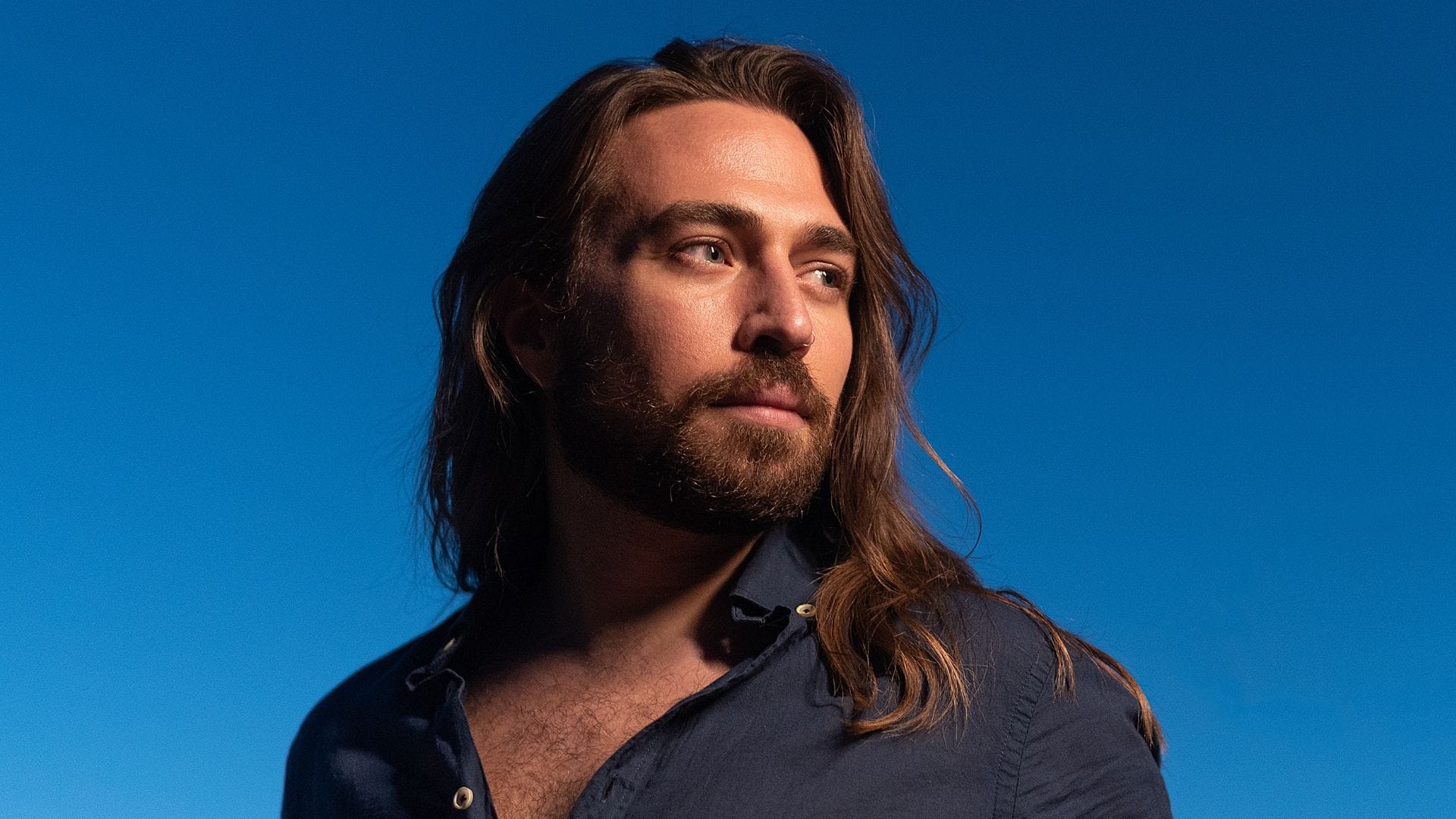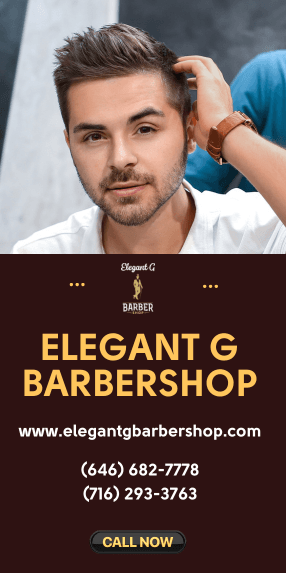Long hair is no longer just for rock stars and surfers. More men are growing out their locks and loving the versatile, stylish looks they can achieve. But with great length comes great responsibility—taking care of long hair requires dedication and a good routine. Here are 13 tips to help you maintain your long hair and keep it looking its best.
1.Regular Haircuts and Trims: Why They’re Essential
You might think growing your hair long means avoiding the barber, but regular trims are crucial for maintaining healthy hair. As hair grows, the ends are prone to damage and splitting, particularly from environmental exposure or styling.
Regular trims, ideally every 6-8 weeks, are a proactive measure to prevent split ends from traveling up the hair shaft. This process helps in removing damaged or weak ends, ensuring that the hair remains strong and resilient.
Trimming does not mean sacrificing length; rather, it is an investment in the overall health and appearance of your long hair. By keeping your hair well-maintained with consistent trims, you ensure a clean, polished look that allows your hair to grow out healthier and more robust over time.
2. Finding the Right Barbershop in New York for Long Haircuts
Living in a bustling city like New York means you have access to some of the best barbershops around. However, finding a barber experienced with a long haircut in New York requires a little bit of research and patience.
The key is to look for someone who not only understands the nuances of long hair care but can also offer personalized styling advice. Start by perusing online reviews on platforms like Yelp or Google, where you can read about other customers’ experiences and the quality of the services provided.
Additionally, consider asking friends or acquaintances with long hair for their recommendations, as personal referrals often lead to the most reliable results. When visiting a prospective barbershop, don’t hesitate to ask questions about the barber’s experience with long hair and specific techniques they use to maintain length while enhancing health and style. Ensuring your barber understands your hair goals will help you keep your mane looking its best amidst New York’s fast-paced environment.
3. Choosing the Best Men’s Grooming Products
Not all grooming products are created equal, especially when it comes to caring for long hair. The foundation of good hair care is using high-quality shampoos, conditioners, and styling products tailored specifically for the needs of men’s long hair. Choosing the right products can make a significant difference in the health and appearance of your mane.
When selecting shampoos, look for options that are free of harsh sulfates and heavy fragrances, as these can strip your hair of its natural oils and lead to damage. Instead, opt for moisturizing formulas that nourish the hair while cleaning it, such as those offered by brands like American Crew. Their shampoos often contain natural ingredients that support hair strength and shine.
Conditioners are essential for maintaining the softness and manageability of long hair. Products enriched with vitamins and essential oils, like those from Jack Black, offer deep conditioning effects without making hair feel greasy or weighed down. A good conditioner will help detangle your hair, reduce frizz, and add a layer of protection against environmental stressors.
For styling, selecting a product that suits your hair’s texture and desired hold is crucial. Light creams or serums can help keep hair smooth and reduce flyaways, while stronger pomades or gels offer control for more structured styles. Always ensure your styling products provide nourishment and protection as well.
Remember, well-maintained hair begins with using the right men’s grooming products. Investing in high-quality items not only enhances the look of your hair but also promotes its long-term health, allowing you to confidently showcase your style.
4. Follow a Good Hair Care Routine
Establishing a consistent hair care routine is essential for maintaining the vitality and appearance of men’s long hair. Begin by determining a washing schedule that suits your hair type and lifestyle; generally, washing two to three times a week is sufficient for most hair types, reducing the risk of over-stripping natural oils while keeping your scalp fresh.
Conditioning should follow each wash to replenish moisture and protect against tangles and split ends. It’s important to leave the conditioner in for a few minutes to allow it to penetrate the hair shaft and deliver its full benefits. Incorporating leave-in treatments, such as leave-in conditioners or hair oils, can provide additional hydration and protection, especially if your hair is prone to dryness or frizz.
Sticking to this routine not only enhances the aesthetic appeal of your hair but also promotes its health and resilience. Regular trims to remove damaged ends are a complementary practice that supports growth and maintains a polished appearance. By committing to a comprehensive care routine, you’ll ensure your hair remains strong, shiny, and manageable, allowing you to express your personal style with confidence.
5. Washing Long Hair: Dos and Don’ts
Washing long hair requires a balanced approach to maintain its health and luster. One of the most crucial dos is to limit washing to two or three times a week. This frequency is optimal for most hair types as over-washing can strip your hair of natural oils, leading to dryness and brittleness, while under-washing can result in buildup and a greasy scalp. When you wash your hair, opt for a sulfate-free shampoo. Sulfates, commonly found in many shampoos, can be harsh and drying, especially on long hair. A sulfate-free option will clean your hair effectively while preserving its natural moisture balance.
Following your shampoo, always use a good quality conditioner to keep your hair hydrated. Apply conditioner from mid-length to the ends of your hair, where it tends to be driest, to ensure even hydration. It’s essential to allow the conditioner to sit for a few minutes before rinsing, as this increases its effectiveness in moisturizing and fortifying your hair. Besides keeping your hair soft and manageable, conditioning can help reduce frizz and protect against damage. By following these washing dos and don’ts, you can maintain your long hair’s health and shine while avoiding common pitfalls that hinder its natural beauty.
6. Drying Techniques to Avoid Damage
Proper drying techniques are essential for preserving the health of long hair, as incorrect methods can lead to breakage and damage. One common mistake is vigorously rubbing your hair with a towel, which can rough up the cuticle, leading to frizz and breakage. Instead, it’s best to gently squeeze out excess water by pressing the towel against your hair and lightly patting it dry. This approach helps maintain the integrity of your hair strands and minimizes the risk of tangling and snapping.
When opting to use a blow dryer, it’s imperative to take additional precautions to protect your hair from heat damage. Begin by applying a heat protectant spray or serum to form a protective barrier that shields your hair from excessive heat. Select the lowest heat setting on your dryer to further mitigate potential damage. While it may take a bit longer to dry your hair this way, the lower temperature helps preserve your hair’s natural moisture and elasticity. To maximize safety and efficiency, maintain a safe distance between the dryer and your hair, and move the dryer continuously rather than focusing on one section. By employing these careful drying techniques, you can effectively reduce the risk of damage and maintain the health and vibrancy of your long hair.
7. The Role of Diet and Hydration in Hair Health
A balanced diet rich in vitamins and minerals is crucial for maintaining the health and vitality of your hair. Essential nutrients, including proteins, vitamins, and minerals, significantly contribute to your hair’s strength, shine, and growth. Foods like salmon, rich in omega-3 fatty acids, help nourish hair follicles, promoting hair strength and elasticity. Eggs, a great source of protein and biotin, help strengthen hair and prevent breakage. Spinach and other leafy greens provide ample amounts of iron and vitamin A, which support scalp health and stimulate sebum production, an important natural conditioner for the hair.
In addition to a nutritious diet, hydration plays an equally significant role in hair health. Drinking enough water ensures that your hair strands remain moisturized and resilient. Proper hydration aids in healthy hair growth and can prevent dryness and brittleness, which often lead to split ends and breakage. By prioritizing both a wholesome diet and staying well-hydrated, you can support your hair’s natural processes, enhancing its overall health and appearance. Together, they form a vital foundation for strong, lustrous, and vibrant hair.
8. Protecting Long Hair from Environmental Damage
Long hair is particularly susceptible to damage from environmental factors such as UV rays, pollution, and harsh weather conditions. These elements can strip the hair of its natural oils, leading to dryness, brittleness, and split ends. To mitigate these effects, it’s important to implement protective measures that create a barrier between your hair and these harmful exposures.
When spending time outdoors, especially in direct sunlight, wearing a hat can provide a physical shield against UV rays. Additionally, using haircare products that contain UV filters offers an extra layer of protection, helping to prevent color fading and structural damage. Such products can be found in the form of sprays, creams, or leave-in conditioners formulated to absorb or reflect UV radiation.
Pollution can load your hair with toxic particles, leading to oxidative stress that degrades the hair’s protein structure. Using a leave-in conditioner or serum can help by not only locking moisture in but also forming a protective film around the hair strands that repels pollutants. Opt for products enriched with antioxidants, as these can neutralize free radicals, reducing the impact of pollution.
In terms of weather, wind, and humidity can alter your hair’s texture and cause tangling. During harsh weather, consider using a scarf or a loosely tied, low braid to minimize exposure and mechanical stress. Regularly applying a deep conditioning treatment can also reinforce hair resilience, providing essential nutrients that keep the hair flexible and strong against environmental aggressors.
9. Styling Tips for Long Hair
Experimenting with different styles for long hair can be an exciting way to express individuality and change your appearance. However, it’s essential to prioritize the health of your hair when choosing styles and tools. One of the most critical considerations is avoiding tight hairstyles, which can put undue stress on your scalp and hair follicles, potentially leading to hair damage or traction alopecia. Instead, opt for loose buns, braids, or ponytails that distribute tension more evenly and are less likely to cause breakage.
When styling, choose hair ties and accessories made from soft, fabric-covered materials or spiraled phone cord elastics, as these are gentler on hair strands. They help minimize the risk of breakage compared to traditional rubber bands or metal clips. Additionally, incorporating protective styling practices can enhance the health of your hair. For example, when braiding, avoid overly tight plaits that could strain the hair, and ensure that any buns or ponytails are positioned comfortably without excessive pulling.
Using styling tools on moderate heat settings is another critical aspect of maintaining healthy long hair. If using heat-based tools like hair straighteners or curling irons, consider applying a heat protectant spray beforehand to shield your hair from high temperature exposure. Finally, giving your hair breaks from styling is just as important. Allowing your hair to rest naturally in between styled days can reduce tension and provide an opportunity for your scalp and strands to recover, ensuring your long locks remain luscious and strong.
10. Bedtime Hair Care Practices
Before heading to bed, it’s vital to adopt a few hair care practices that can greatly benefit the health and appearance of your hair. Start by gently detangling your hair using a wide-toothed comb or your fingers, which will help prevent knots and reduce the likelihood of breakage while you sleep. For those with long or easily tangled hair, consider braiding it before bed. A loose braid can help maintain the hair’s integrity and prevent tangling throughout the night, keeping your tresses neat and manageable by morning.
Another essential bedtime practice is swapping your cotton pillowcases for silk ones. Silk pillowcases are smoother than cotton, which reduces friction between your hair and the fabric as you move during sleep. This decreased friction can help minimize frizz and wear on your hair, leaving it smoother and shinier. Additionally, silk has natural properties that help retain moisture, which benefits both your hair and skin, making it an ideal choice for those looking to enhance their beauty sleep routine.
11. The Benefits of Regular Massages for Your Scalp
Regular scalp massages offer an array of benefits that contribute significantly to both the health of your hair and your overall well-being. By stimulating blood flow to the hair follicles, scalp massages can promote hair growth, potentially leading to thicker, healthier locks over time. The increased circulation ensures that essential nutrients are delivered more effectively to the hair roots, fostering an environment conducive to hair growth and overall scalp health.
In addition to the physical advantages, scalp massages are also a powerful tool for relaxation. The gentle kneading and pressure of a scalp massage can relieve tension, reduce stress levels, and promote relaxation, enhancing your mental and emotional health. This soothing practice can be easily incorporated into your routine, as you can perform it yourself at home using the tips of your fingers or indulge in a professional massage during visits to the New York barbershop or salon.
A little bit of effort in maintaining a regular scalp massage routine can go a long way in preserving the health and vitality of your scalp. Whether you choose to devote a few minutes each day to this practice or enjoy a more in-depth session once a week, the benefits are well worth the investment. By nurturing your scalp, you not only ensure healthier hair growth but also experience the calming effects that contribute to a more balanced, stress-free lifestyle.
12. Managing Split Ends and Breakage
Split ends are a common issue, especially for those with long hair. While it’s impossible to completely eliminate them, you can significantly reduce their occurrence with the right care. One of the most effective ways to manage split ends is by scheduling regular trims. By cutting off the damaged ends, you prevent the split from traveling further up the hair shaft, which helps maintain the health and appearance of your hair.
Incorporating deep conditioning treatments into your routine is another powerful strategy. These treatments replenish moisture and strengthen the hair, making it more resilient to damage. Look for conditioners or masks that contain nourishing ingredients like keratin, argan oil, or shea butter, which can help repair and smooth the hair cuticle.
Excessive heat styling is a leading cause of split ends and breakage, so it’s crucial to minimize the use of hot tools like flat irons, curling wands, and blow dryers. When you do need to style with heat, always apply a heat protectant to shield your hair from high temperatures. Opting for lower heat settings and allowing your hair to air dry whenever possible can also help prevent damage.
If you detect split ends, address them swiftly by trimming the affected areas. This proactive approach not only halts the progression of the split but also keeps your hair looking tidy and healthier overall. By adopting these strategies, you can manage split ends more effectively and enjoy stronger, more vibrant hair.
13. Dealing with Frizz and Tangles
Humidity can wreak havoc on long hair, often leading to unwanted frizz and tangles. To combat frizz effectively, it’s crucial to incorporate an anti-frizz serum or cream into your hair care routine. These products typically contain ingredients that help smooth the hair cuticle, add shine, and create a barrier against humidity. When applying, focus on the mid-lengths and ends where frizz is most likely to occur.
Tangles, another common issue with long hair, can be minimized by detangling your hair with care. It’s best to use a wide-tooth comb or a brush specifically designed for wet hair. Begin at the ends of your hair and gently work your way up towards the roots. This technique minimizes breakage by gradually working through knots without pulling and stretching the hair. Incorporating a leave-in conditioner or detangling spray can also aid in softening the hair, making it even easier to manage and reducing the risk of damage. By adopting these mindful practices, you can enjoy smoother and more manageable hair, even in the most challenging conditions.
Conclusion
Growing and maintaining long hair as a man takes effort, but the results are worth it. By following these tips, you can ensure your hair stays healthy, stylish, and manageable. Ready to take your hair care to the next level? By incorporating these tips into your hair care routine, you’ll be well on your way to maintaining healthy, long hair. Don’t forget to share this article with other men who are on the same hair-growing journey!


